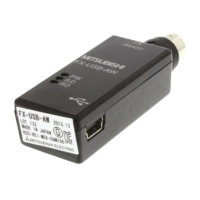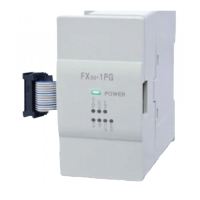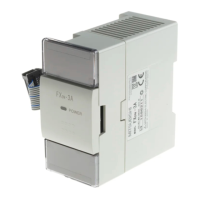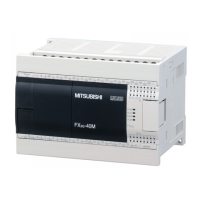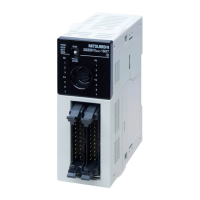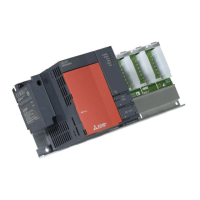Fig. 3-1:
Postion controller
Outputs the positioning speed and the
movement quantity in command pulses to the
servo amplifier.
Transfers signals between the programmable
controller.
Controls return to the zero point.
Powerboard
Improves the power factor and cuts noise.
Protects the power circuit.
Rectifies the AC power of the main circuit into the DC power in the
converter, and smooths it in the smoothing circuit. When the DC power is
converted into AC power in the inverter, the current supplied to the servo
motor is changed by the PWM (pulse width modulation) control in the
control circuit.
The deviation counter receives and counts the command pulses from the
positioning controller, subtracts the feedback pulses from them, then
drives the servo motor until the accumulated pulse number becomes 0.
Servo amplifier
Operation equipment
Nearpoint DOG signal
In some types, the limit switch signal
is wired to the position controller
AC power
supply
Breaker
Power factor
improving AG
Radio noise
reactor filter
Electromagnetic
contactor
Line noise
filter
Position controller
Command
pulse
Positioning
command
control
Parameter
Zero point
return
control
Servo
ready
Main circuit
Servo amplifier
Converter
Smoothing
circuit
Regenerative
brake
Inverter
Dynamic
brake
Feedback
current
Counter clear
Feedback pulse
Operation switch
Manual pulse generator
Zero point signal (PGO)
Gives inputs for manual/automatic mode, start/stop, zero
point return command, manual forward rotation/reverse
rotation and manual pulse generator to the positioning
controller.
Pulse
magnification
Deviation
counter
Speed
command
(Electronic gear)
Current
control
PWM (pulse width
modulation) control
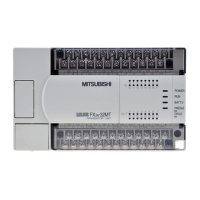
